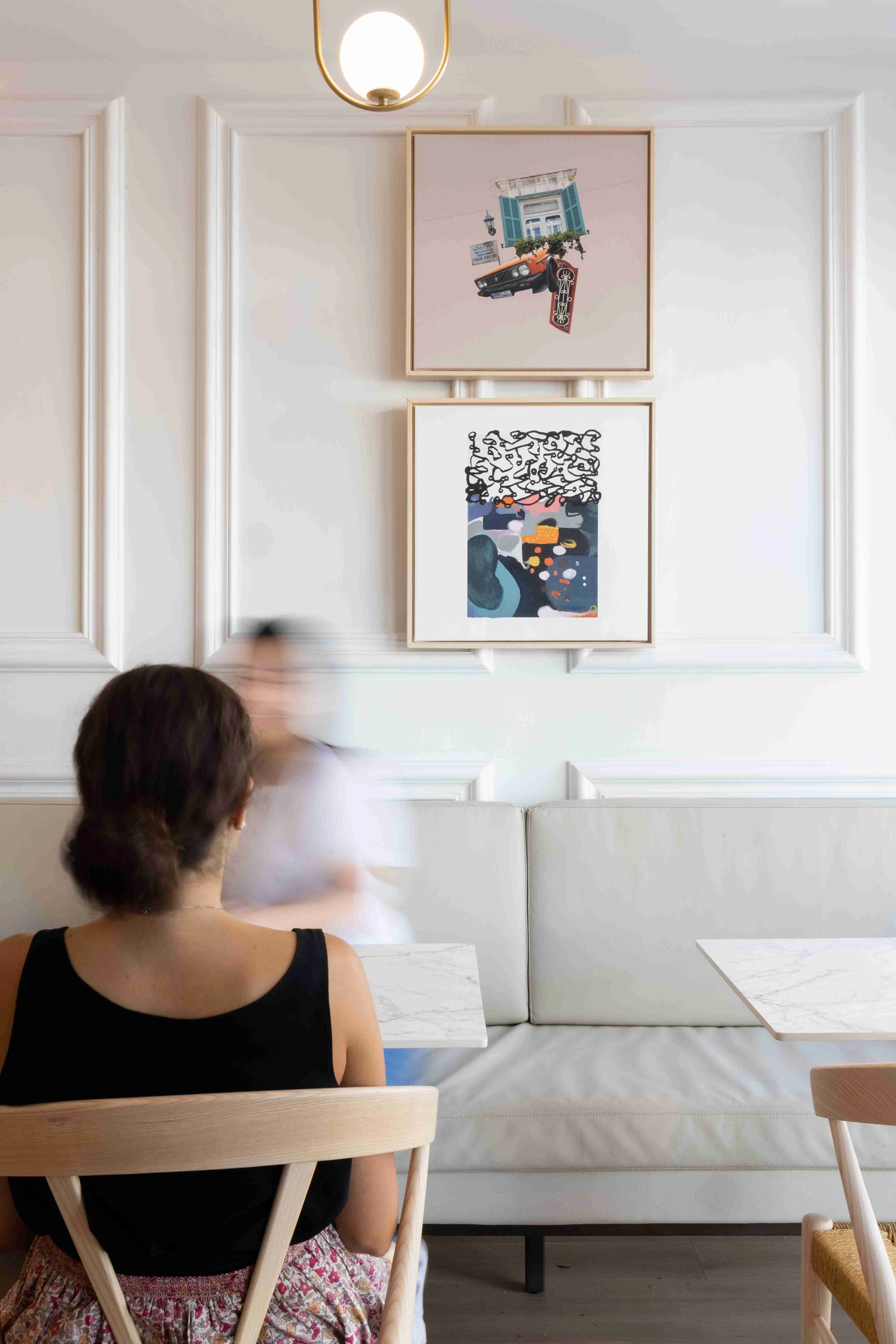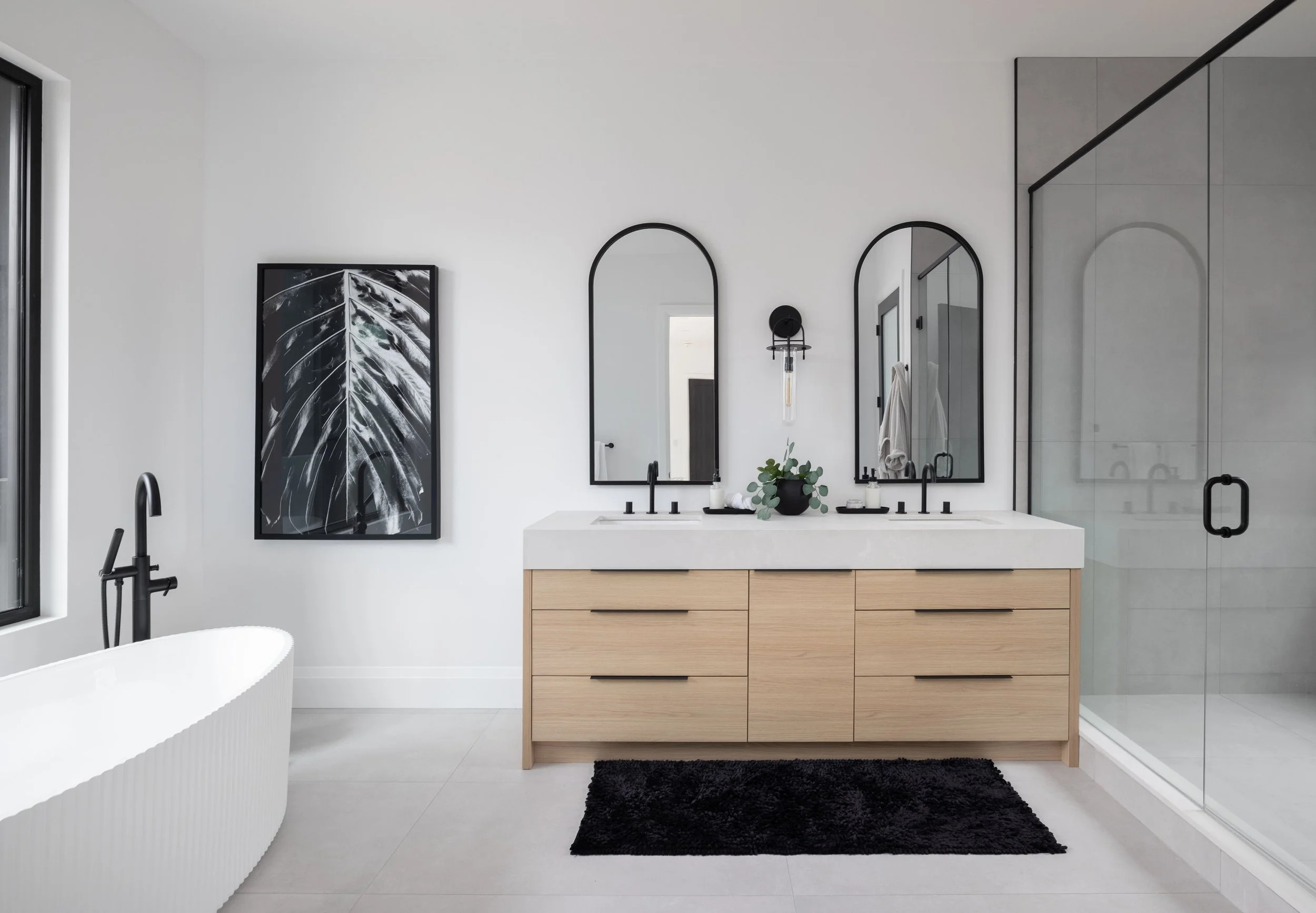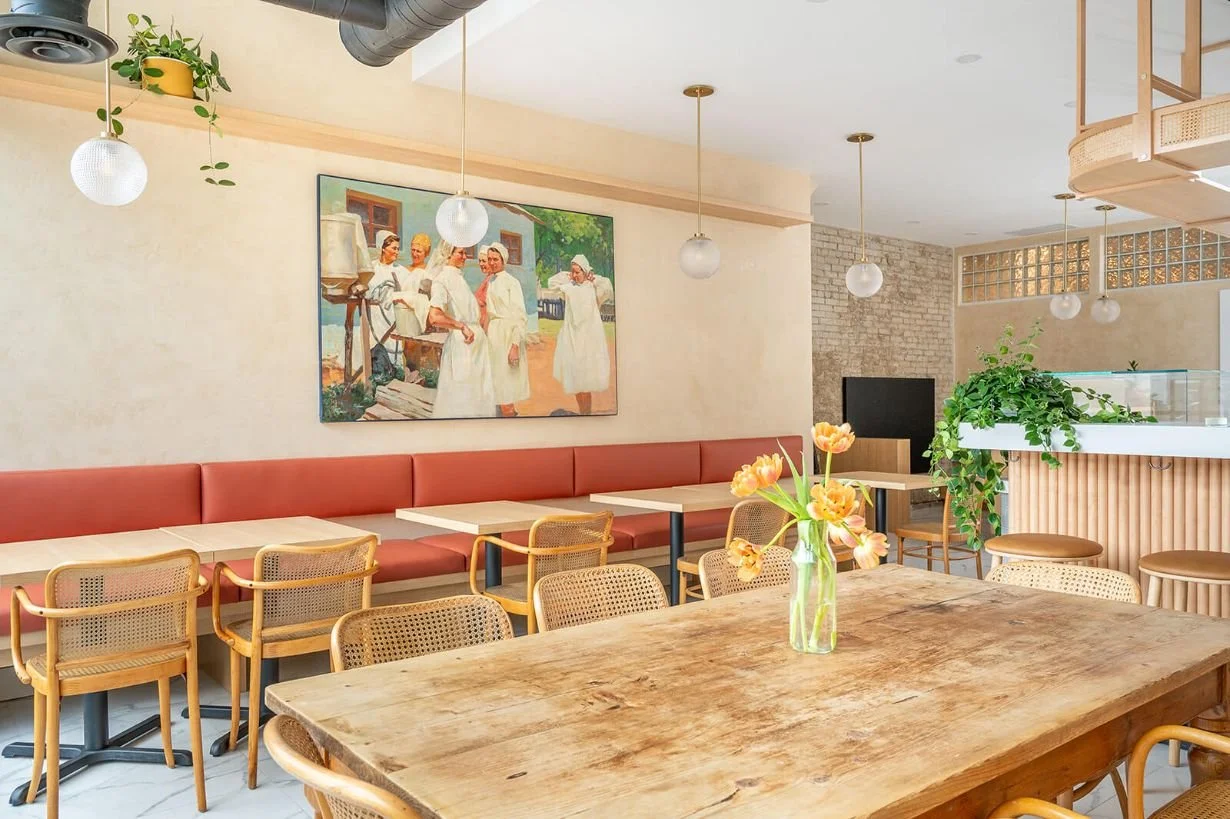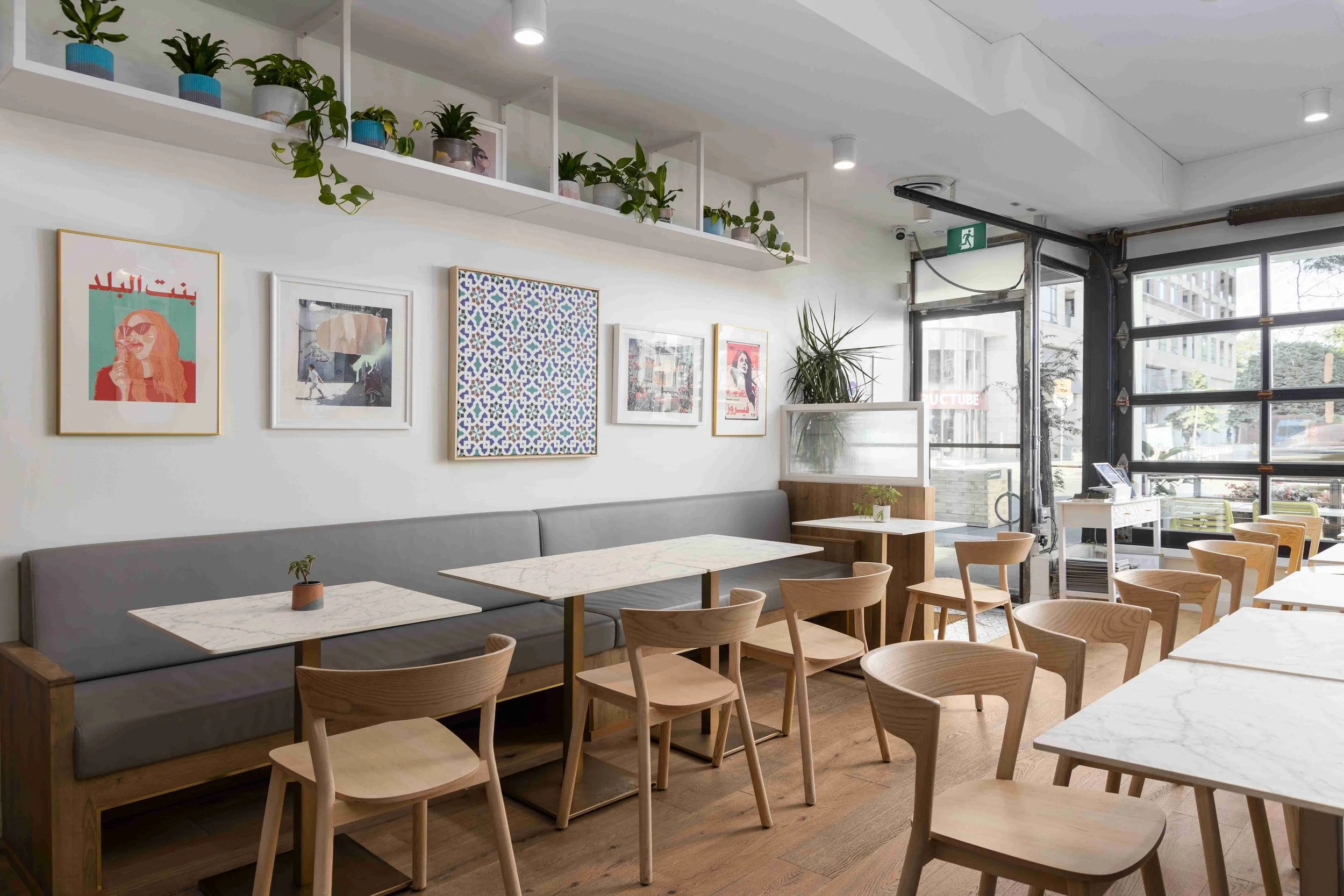How to Choose and Display Artwork
Your Reference Guide for Curating Your Art Collection
In the world of interior design, art serves as a powerful tool to transform a space and evoke emotion. Whether you are a seasoned collector, an art enthusiast, or simply looking to enhance your home’s aesthetic appeal, selecting the right artwork can elevate a room, making it more vibrant, personal, and visually captivating.
Preparing Your Space for Art
Understanding the Needs of the Space
How do I know if my space needs art? How do I know what art will work with the rest of the room? These are questions that you may be asking yourself when starting the process of selecting art for your space. It is best to analyze the space and consider the size of the room, its layout, and its function. Does this room allow users to admire the piece? Or will it be distracting from tasks that need to be completed?
Lighting Conditions
Proper lighting will enhance the colours, textures, and details of artwork and bring them to life by creating a focal point within a room. The angle, intensity, colour, and quality of light can dramatically alter the way art is perceived and viewed, emphasizing certain aspects while subtly shaping the overall ambiance of the room.
A thoughtfully curated lighting plan ensures that artwork is showcased in the best possible way. Consider using track lighting to spotlight specific pieces, wall sconces or picture lighting to provide illumination to a gallery wall, or adjustable spotlights to highlight sculptures and installations. Additionally, consideration of natural light sources and their interaction with artificial lighting is crucial, as it can affect the appearance of colour and create dynamic shifts throughout the day. Ultimately, the right lighting not only enhances the aesthetic appeal of the artwork but also contributes to the cohesive visual narrative of the room
Colour Scheme
When introducing artwork into your home, it is important to consider the colour and patterns in an existing room. These elements serve as a foundation and guide your choice of art to either blend harmoniously or create a striking contrast.
If your room features a dominant colour scheme, adding artwork that incorporates these hues will create cohesion and unity. This approach ensures that the artwork feels like a natural extension of the room’s design, creating harmony and balance. Conversely, introducing art with contrasting colours can inject energy and drama. A bold, abstract painting with vibrant reds, yellows, and oranges can become a captivating focal point in a room adorned with soft, neutral tones.
Pattern also plays a significant role when selecting pieces for your space. If your room has intricate patterns on elements such as rugs, upholstery, or wallpaper, choosing simple, more subdued art can prevent visual clutter. On the other hand, minimalist interiors can be enlivened by complex, detailed artwork that adds layers of visual interest. The interplay between existing colours and patterns and the chosen artwork allows you to tailor the visual narrative of your space, whether you aim for serene harmony or dynamic contrast.
Identifying your Style
Selecting art can feel daunting and overwhelming. Art is subjective; there is no right or wrong answer, but there are guidelines that can be used as a helpful tool when choosing artwork. Ask yourself what feeling you want to convey—calmness, excitement, inspiration, or nostalgia— and select pieces that align with those emotions. What do you enjoy? Think about the subject that attracts you and defines your style. Is it bold and abstract, a serene landscape, a vibrant urban scene, or a thought-provoking portrait or sculpture? Do you prefer traditional or contemporary art? Understanding and identifying your style and preference for art can help narrow down your options.
Selecting Artwork to Display
Scale and Proportion Matter
Art, when thoughtfully placed, becomes an integral part of a room’s architecture. The scale and proportion of a piece should be harmonious with the dimensions and layout of the space. A large, captivating piece might be the focal point in a spacious living room, while a collection of smaller, intimately framed artworks can enhance the ambiance of a more confined area. Attention to these details ensures that the art is complementary to its surrounding elements, rather than competitive.
Start With a Piece That You Love
Storytelling and personal connection are what make art unique and profoundly meaningful. Each piece can carry its narrative, inviting viewers to engage with it on a deeper level. Often, a cherished piece that holds special significance can serve as an alluring starting point to the journey of sourcing your collection. By allowing this piece to guide the vision and set the tone, you can curate a collection that not only reflects your personal taste but also tells a compelling story. Starting with one notable piece can simplify the process, especially if you are uncertain of where to begin. It becomes a foundation on which you can build, adding complementary works that resonate with the emotions and themes embodied by the original choice. This approach not only helps in developing your collection but also enhances the overall narrative of your space, turning your walls into a canvas of personal history and artistic exploration.
Create a Cohesive Plan
Whether you are selecting art for multiple rooms, a singular space, or looking for that final piece to complete your collection, creating a cohesive and thoughtfully curated art plan will have a lasting impact. It’s important to take time and consider your environment in advance, and envision how each piece will harmonize with the overall aesthetic and/or the existing surroundings. Instead of making impulsive purchases without a clear idea of where the artwork will ultimately reside, reflect on the characteristics of each room - its lighting, colour, style, etc - and purchase pieces with intention so that the art you choose resonates well and complements its setting.
Consider the Placement
Although not all walls in a room need to be filled, it is helpful to understand and decide how you want the artwork to lay out. That large, captivating piece that is the focal point in the room should be complemented by smaller works installed elsewhere in the room. Maybe that large, long wall is better filled by a diptych or triptych to consume the length, with singular smaller pieces as companions. Smaller pieces, depending on their size, shape, subject, and quantity, can be installed on their own or grouped together in a stacked or grid formation. Hanging pieces at eye level will optimize the viewing experience - typically 60” - 65” from finished floor to the centre of the artwork is a good rule to follow. If you are hanging a work behind a sofa or above a console table, allow 8” - 10” between the bottom of the art to the furniture item. That way, the art becomes an association of the furniture. For your perfect placement guide, refer here
Creating a Gallery Wall
The concept of a gallery wall transcends mere decoration; it evolves into a captivating art form that tells a story about the space. To begin, select a wall that can bear the visual weight of a gallery, such as a large, blank expanse in your living room, a long hallway, or a staircase.
Next, consider the theme you wish to convey with your gallery wall. What entices you? A sleek, minimal grid style that highlights a clean and contemporary vibe, or a traditional mix of eclectic pieces? Defining your aesthetic vision will help guide your artwork selection and arrangement. It is also helpful to determine the subject matter you wish to showcase. Perhaps it is photography, different scapes, architectural designs, or a combination of various elements. Once a clear concept has been formed and a subject has been decided, experiment with frame styles, sizing, and mediums to craft a visually compelling ensemble. This creative endeavor involves laying out potential arrangements on the floor, allowing you to gauge visual balance and flow before making any commitments to hanging and poking holes in your walls
Finally, remember that a well-curated gallery wall is more than just a collection of prints on a wall. It transforms a blank canvas into a dynamic tapestry that reflects your eclectic taste and diverse aesthetic sensibilities. It invites conversation, sparks curiosity, and makes the space feel uniquely yours.
How to Select Framing
Choosing the right frame can significantly enhance the impact of your artwork. There are countless frame styles to choose from, and the best option for your piece depends on both the nature of the art piece itself and the overall aesthetic of your interior. Slim, modern frames tend to suit contemporary pieces, while ornate frames work well with more traditional style pieces. That said, mixing styles can add a creative twist to your space while also making a piece feel more at home in a space where it might not naturally fit.
Another element to consider is whether to use a mat. A mat is a border placed around the artwork within a frame, and can serve both visual and functional purposes. Visually, the mat creates negative space around the art, giving it breathing space, allowing your eye to be drawn inward. Functionally, mats can also be used to scale a smaller artwork up to fit a larger frame, giving you more flexibility with how and where it’s displayed.
Bringing new art pieces into your space doesn’t need to feel overwhelming. It’s all about finding pieces that speak to you and thoughtfully placing them into your space. Remember, great art doesn’t just fill a space, it elevates it. So trust your eye, have fun with the process, and don’t be afraid to break a few “rules” along the way.











